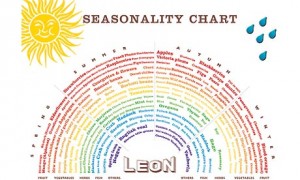Eating Food At Its Best
One of the most important aspects of the Handy Plan nutrition approach is food quality. Food is the building blocks of our body – the basic material of our skin, nails, teeth, bones, blood etc. We should be aiming for the cleanest, most nutrient-dense foods we can if we want to achieve peak health, body composition and performance.
So how do make sure our food is the best quality it can be?
First off, we can discount any processed, packaged foods. Typically these foods have been part-cooked or pre-digested, losing a significant amount of their nutrient content.
1. Organic and Local. If you can pick up your food from a local, organic farm shop you will benefit from low food miles, high nutrient density, seasonality and interestingly, a nutrient profile that suits your biology. We have regional vitamin and mineral requirements, so the best food you can eat is the food that is local to you.
2. Locally Farmed. Research has shown that food miles and the time between food being harvested and eaten can have an enormous effect on the quality and nutrient density of the food. My suggestion is if you can’t buy organic, try to buy local as it would have lost less of the benefit. Just make sure you wash it thoroughly to try to remove any surface pesticides and herbicides.
3. Organic, Supermarket. If you buy your foods from the supermarket (nothing wrong with that), do try to go for organic. Most supermarkets have reduced their transit time between field to shop, so you will still benefit from organic. There will be some nutrient loss, and it won’t be local, but you will still benefit from decent nutrient density and no chemical addition.
4. Local, Supermarket. If budget is the issue and you can’t afford organic, at least try to buy food as locally grown as possible. If you can’t get Cheshire vegetables, at least try to get English! Remember, local does carry a lot of significance as there is less transit time and a mineral profile that is in line with our requirements.
5. Frozen. Frozen fruit and vegetables aren’t actually that bad. Good quality frozen vegetables are blast-frozen within a couple of hours of being picked, meaning much of the vitamin and mineral content is maintained. Again, aim for organic if you can to improve the quality.
6. Tinned. When buying your vegetables, I would avoid tinned and only buy them as an absolute last resort. Over time the vitamin and mineral content leaks into the brine, which is discarded after cooking, taking most of the goodness with it!!
With all foods available 365 days per year, we have lost our connection with the seasons. Eating food when it is in season is far better for us – the quality is higher and the price is lower, due to its relative abundance.
For more information on when food is in season, check the chart below!
